Last year, I did a blog post on Amazon’s then-new advertising program and whether it’s working for me. It wasn’t, and it still isn’t (I tried again recently with a couple of my pen name books, since they’re in KDP Select), but I had a recent comment from another author who is using Amazon ads to good advantage.
Since it was a useful comment, I decided to post it here where more people would see it, and I also asked the author, Yancy Caruthers, some follow-up questions (if you’re not already familiar with Amazon’s advertising opportunities for authors, check out my earlier post for more on the basics of what the program is and how it works).
Yancy writes:
As I read through the comments, the consensus seems to be that this is a waste of time, but I have had a very different experience.
First, connecting your book to specific titles doesn’t work. People go to that title because they care about that book, not yours. You can be creative with your genres – my book is a military memoir, and I advertise in action/adventure as well as military and medical biographies. Cast the net wide! If I was writing Sci-fi romance, I’d advertise in both sci-fi AND romance, and make sure my cover and title reflected my genre accurately. People who weren’t interested simply wouldn’t click. But some would be, and would want to read more.
I started out bidding at 5c, but wasn’t getting more than a few thousand impressions (in a month) and a handful of clicks. After a couple of months, I increased my bid to 8c and started getting more. Impressions don’t sell books, but they do give you data. Out of several thousand impressions, I was getting 0.8%CTR, and my conversion rate was about 5%. I calculated that at that rate, I could pay up to 12c for clicks and still break even, so I increased my bid to 10c. Realize that you won’t get any impressions at all until the Amazon computer connects your ad to a page or keyword.
I went from selling a handful of books per MONTH to selling a handful every day. I’m averaging between 100-200/month. I’m not getting rich, but for every dollar I spend on the ad, I’m making back about $1.50 (about 30c of that is from KU pages read). Those numbers bring reviews now and then for an added bonus.
The ads are flaky, and I think that’s Amazon’s formula – I’ll get sales every day for a week, then I’ll go a few days without any. It averages out – I even had two days when sales were so good, I hit #848 in the entire catalog. Then I didn’t sell any for almost two weeks and was back down into the high five digits with the one-book-a-day-ers.
A couple of things people should understand – The number of impressions you get is a result of your bid and in what market you are bidding into. Your CTR depends on having a great cover, title, and a catch phrase for the ad – and 1% is considered very good. Your conversion rate depends on having a good landing page with a catchy blurb that makes people who land there want to buy. They are already interested or they wouldn’t have clicked. Just reel them in.
So before you pass judgment on Amazon’s PPC, realize that it’s a lot more complicated than “Does it work or not?” The PPC thing now drives 75% of my online sales. Everything else I do drives the other 25% as well as my physical copy sales (about 10% of the total) but that means I’m spending 98% of my time on 28% of my revenue. I’m currently looking at eliminating my time-wasters (like Twitter – ugh – I’m obviously not doing that right) and focusing on things that I have figured out how to make work for me.
After commenting here, Yancy agreed to answer a few more questions:
You mentioned going really wide with your targeting (i.e. all of science fiction and all of romance if you’re writing science fiction romance, even though that’s a pretty small niche). When I used to do Google ads, I’d find that you would be punished (your ad would be shown less) if you had a low click-through-ratio. It seems that when you go really wide like that, there would be a very small percentage of people who would click and that your CTR would suffer. Thoughts?
Amazon doesn’t want ads that don’t sell anything, but those tend to weed themselves out. It’s possible that somewhere buried in their magic formula is a mention of CTR and Conversions, but that hasn’t slowed me down as far as I know.
Targeting a wider audience makes sense, within reason. I made the assumption that readers of fiction action/adventure would be potential readers, even though I wrote a piece of narrative military non-fiction. Even people who read a narrow genre like sci-fi romance also read other genres. Which other genres are the most common?
Since CTR is simply a function of the quality of an ad and where it is placed, one could certainly run identical ads in two different genres and measure the CTR. If one is getting impressions but no clicks, you’re in the wrong market. If neither is getting clicks, maybe the problem is the ad itself. If it’s getting clicks but no sales, take a look at your landing page, cover, and blurb.
Do you have any advice for authors on how to measure what their earnings per click end up being? Since you can’t use your affiliates links, the way some do with Facebook ads, there’s no way to tell which sales came from the Amazon advertising campaign. If you weren’t selling any books, and suddenly you’re selling some at the same time as you’re getting clicks, I guess it’s pretty doable, but what if you already sell books, and the amount varies quite a bit per day?
Amazon tracks this data for you, independently of your other sales! They list impressions, clicks, total spent, total sales, and cost per sale. You can calculate your CTR by dividing the clicks by the impressions. The number of sales can be calculated by dividing the total sales by the cost of the title ($2.99 in my case). Cost of sale is also an important number, even though it’s misleading. Since Amazon already takes 30% of my $2.99 sale, then 70% is the break-even point.
[Lindsay: Hah, I didn’t remember this feature from when I was tinkering last year, but maybe it’s just because I never got clicks! That’s excellent then.]
I assume you’ve played with ad copy quite a bit. Are there any tips or tricks specific to Amazon that you could share?
I have, but I know very little about it. I think of it like a Tweet – there are a limited number of characters to tell the viewer why the book is interesting. Play with it, but be patient and give it time. No ad generates meaningful data until it’s been seen a few thousand times. The quality of the ad is important, so check out what others have done. Equally if not more important is the landing page. Back in September when I started my first campaign, I looked at the landing page and thought, “This is boring. I wouldn’t buy this.”
It sounds like you also haven’t had much luck targeting specific books. Have you tried doing bestsellers or something that’s just gotten a Bookbub ad in your genre? (With sci-fi romance, I think there just wasn’t that much inventory to pick from.)
After I read your blog, I gave the title-linked ads a try. I chose the top 20 sellers in my specific category and added several more. In the past 3 weeks I have gotten less than 100 impressions. My theory is that the more popular titles require a higher bid-per-click. If I could get impressions on those pages, I would probably sell books, but if I bid that high, then I lose money and I won’t pay people to read my title.
I have scaled it for demonstration purposes, but the CTR and Conversion Rates are actual:
Impressions x CTR = Clicks. Clicks x Conversion Rate = Sales.
100,000 x 0.8% = 800. 800 x 6.2% = 49 sales…
Assuming a $2.99 title on which I make $2.05 in royalty, those 49 sales made me $100.45. As long as I didn’t pay more than that for those 800 clicks, then I’m making a profit. I currently bid a maximum of 10c/click, so my 800 clicks would cost $80 at the maximum and I still make $20.45. Since my title is also enrolled in KU, then I also get paid for KU pages read. This has varied, but covers the cost of almost 40% of my clicks.
You may also observe that a very slight variation in CTR or Conversion Rate will make a huge difference in sales. If I could get my CTR to 1%, for instance, I would average 13 more sales per 100k impressions.
Yancy’s plan going forward:
I am going to stop my title-linked campaign at the end of this month. It doesn’t seem to get me impressions since I am only bidding 10c/click.
I am going to split my current campaign into two parts. I want to separate the fiction action/adventure from the non-fiction genres, to see what actually produces the most impressions. I’ll use exactly the same ad, but I want to see if there is any significant difference in CTR and conversions. It is possible that I am losing money on half of my campaign and making it back on the other half.
I’m also going up to 12c/click for a month. If nothing else changes, I’ll be giving away a good chuck of my remaining royalty, but I want to see if I can get a substantial increase in impressions by bidding just slightly higher.
Yancy’s recommendation:
Start out at 5c/click in your own and substantially similar genres. Be patient, give it a month. See if you get exposures (some genres are more expensive than others). Once you have some data (and hopefully some sales) then you’ll know more and can make adjustments. Understand that none of this happens quickly and real data comes with time. Steering an ad campaign is a lot like piloting a battleship in a crowded harbor. I’ve been doing this for almost 6 months and am still making adjustments, trying to find that sweet spot for sales.
Visit Yancy at:
Check out his book on Amazon: Northwest of Eden.
Update: He’s provided an example of his ad for us:
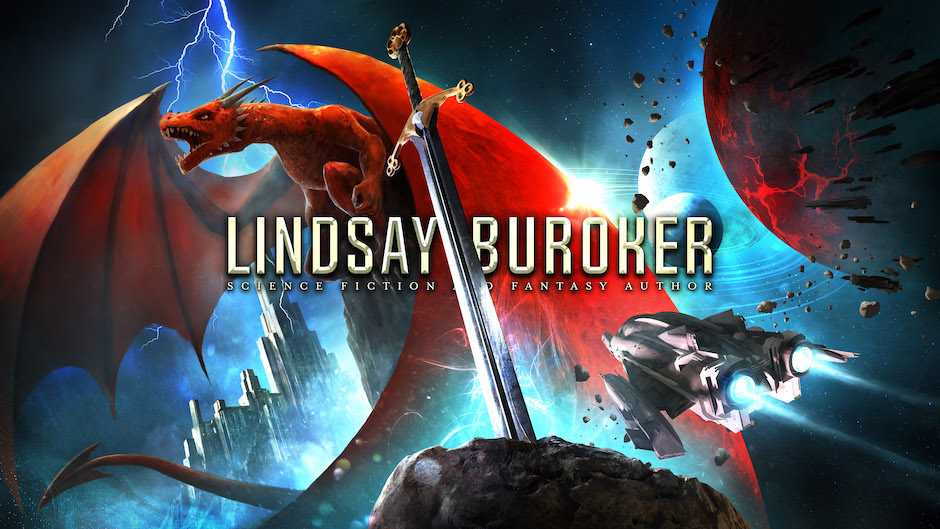
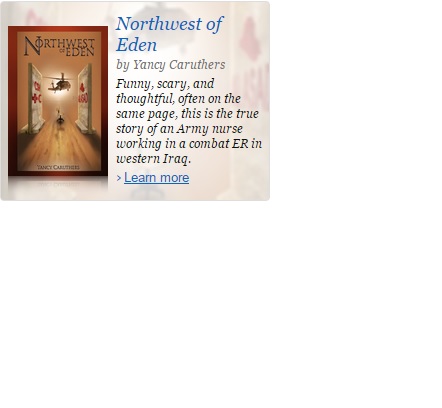
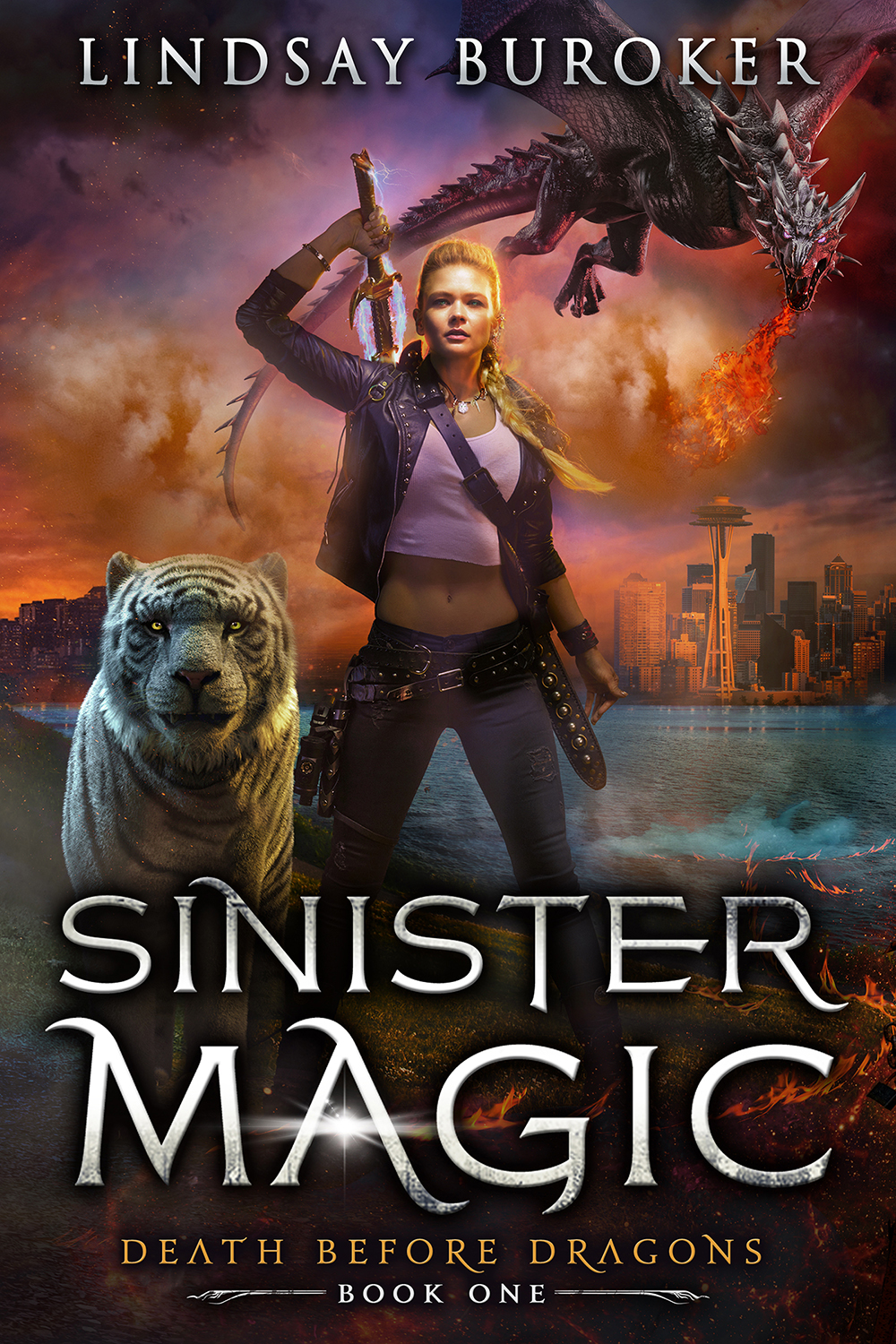
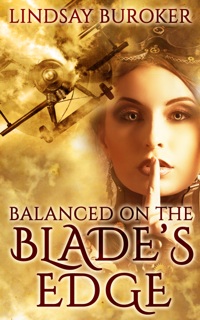
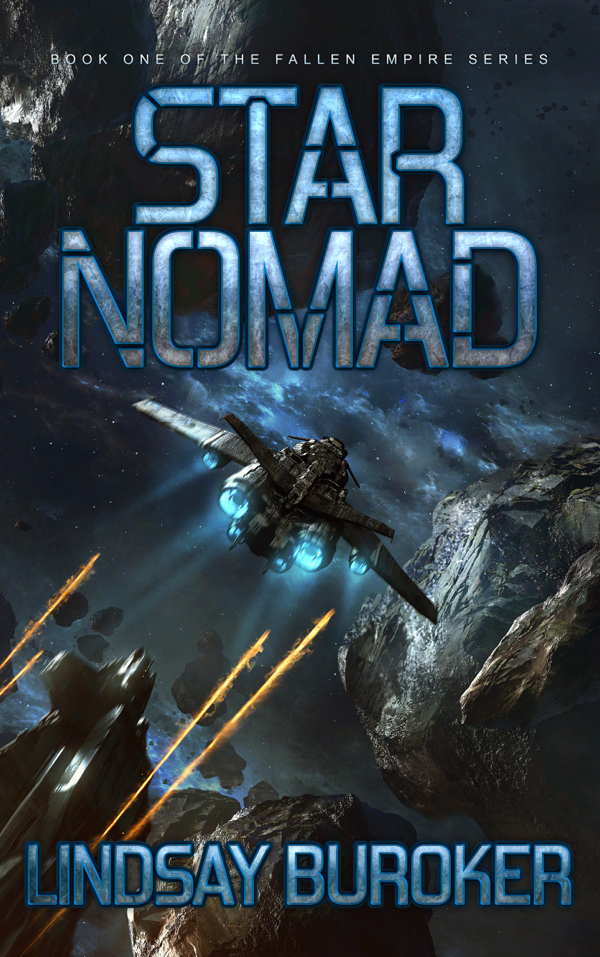
I’m curious about the landing page you mention. Isn’t just the page for your book at Amazon? How much control do you have over how that looks?
Thanks for an interesting and inspiring article! I’m bookmarking it and sharing it with my peeps.
By “landing page” I was referring to what the user landed on when s/he clicks the ad, which in this case is the Amazon book page. You might not control the layout, but you write the blurb! Having a great paragraph or two on your book page is what gets the clicker to “convert” to a buyer. The more interesting it sounds, the higher that rate will be.
Thanks for all the detailed info! I would love to actually see the ad and landing page you’re using!
My landing page is amzn.com/B00JXWZ7CC
The ads are various shapes and sizes depending on where Amazon places them. You can preview them before they go live. You’ll have to conjure up a title for the ad and a short bit of text.
If someone clicks on the ad and lands on the book page, NONE of the ad text is repeated. They have already seen that. I have to use new words, fresh words.
I’ll send a screenshot to Lindsay and maybe she will post it up for you to see. If not, you can contact me on my Facebook page “Northwest of Eden” and I’ll send it to you.
Awesome, I’ll post it right now!
On the landing page, it also helps to post one or two compelling, sentence extracts from reviews, especially blog site ones, and to keep your bio up to date.
I’m trialling an amazon ad starting today on a fantasy title. Far too early to figure out if it’s working, but if I find out anything worthwile, I’ll try to remember to comment here. I’m known for erotic works and this one isn’t what I’d call erotic lol So marketing is a challenge.
I love all the tips on marketing you give, Lindsay.
I’d be very interested to hear what kind of click-through-rate you are getting in that genre as well as your conversion rate. Since you write other books in a different genre, you might not get a lot of traffic on those from this ad, but I’m sure you will get some. I hope it’s measurable and that you are willing to share.
If it’s too pitiful, you may not hear from me again 🙂
So far , though I’m getting impressions, I don’t think the results are exciting. I had a spike in sales a few hours after the ad began but that seems to have been random.
I decided to target specific books, part Indie, part mainsteam. Logically, people always go to another book’s page for that book, not your ad, so justifying targetting on interest category rather than specific products, on that basis, doesn’t seem better to me, yet. I may change my mind.
A running comment. I am disappointed with the ad editing. With facebook you can adjust the targeting if the results arent pleasing.
I was surprised to find that amzon doesnt let you do much more than adjust what you’re spending and bidding. I was going to remove the big mainstream books and replace the targeted product with successful Indie ones. Lindsay Buroker would make a good target 🙂 But I’m stuck with what I have.
Theoretically, a reader would be more likely to buy from an Indie author if they already do so.
That is a drawback – if you want to change your ad you basically have to create a new one. However, you may run several at once if you want to test the CTR of various placements or wording.
I found out that if you have targetted by books, there is a tab that lets you change your ad targets. You can add or subtract books quite merrily.
So far this ad is having zero direct sale success. 3600 impressions over 10 days. 26 clicks. 0 sales.
I started a similar ad for my best selling dark erotic book, which is only just dwindling in the ranks after over 5 months, and similar results. No direct sales, though I do get more inpressions per day. Both bids were around 25 c.
I’m going to try changing to your suggestion. I’ll terminate this campaign for needle rain and try targetting by genre. I have seen a thread on kindle boards saying targetting book titles was better though. Hasnt really worked for me but Im so unknown in plain fantasy and steampunk.
My best sales blip occurred after Meljean Brook, an author in this genre who happens to like my erotic steampunk books, kindly pimped my book on her facebook wall. It seemed to be an anomaly and not related to this ad.
Considering the cost so far is only in the $6.00 range, it’s not a disaster.
Pingback: Are Indie Publishers Pooping in the Swimming Pool – Inside the Inkwell
yes, u agree with your point that First, connecting your book to specific titles doesn’t work. People go to that title because they care about that book, not yours.